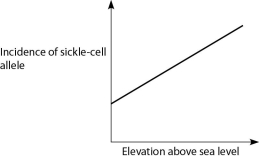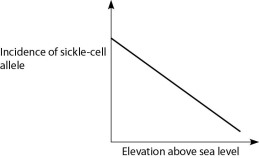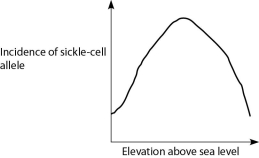Multiple Choice
Anopheles mosquitoes, which carry the malaria parasite, cannot live above elevations of 5,900 feet. In addition, oxygen availability decreases with higher altitude. Consider a hypothetical human population that is adapted to life on the slopes of Mt. Kilimanjaro in Tanzania, a country in equatorial Africa. Mt. Kilimanjaro's base is about 2,600 feet above sea level and its peak is 19,341 feet above sea level. If the incidence of the sickle-cell allele in the population is plotted against altitude (feet above sea level) , which of the following distributions is most likely, assuming little migration of people up or down the mountain?
A) 
B) 
C) 
D) 
Correct Answer:

Verified
Correct Answer:
Verified
Q1: Whenever diploid populations are in Hardy-Weinberg equilibrium
Q2: In a hypothetical population's gene pool, an
Q7: Which variable is likely to undergo the
Q10: In a Hardy-Weinberg population with two alleles,
Q12: There are 25 individuals in population 1,
Q23: The restriction enzymes of bacteria protect the
Q24: <img src="https://d2lvgg3v3hfg70.cloudfront.net/TB5463/.jpg" alt=" Figure 25.3
Q58: The restriction enzymes of bacteria protect the
Q62: How many of these statements regarding populations
Q78: Which of the following is a true